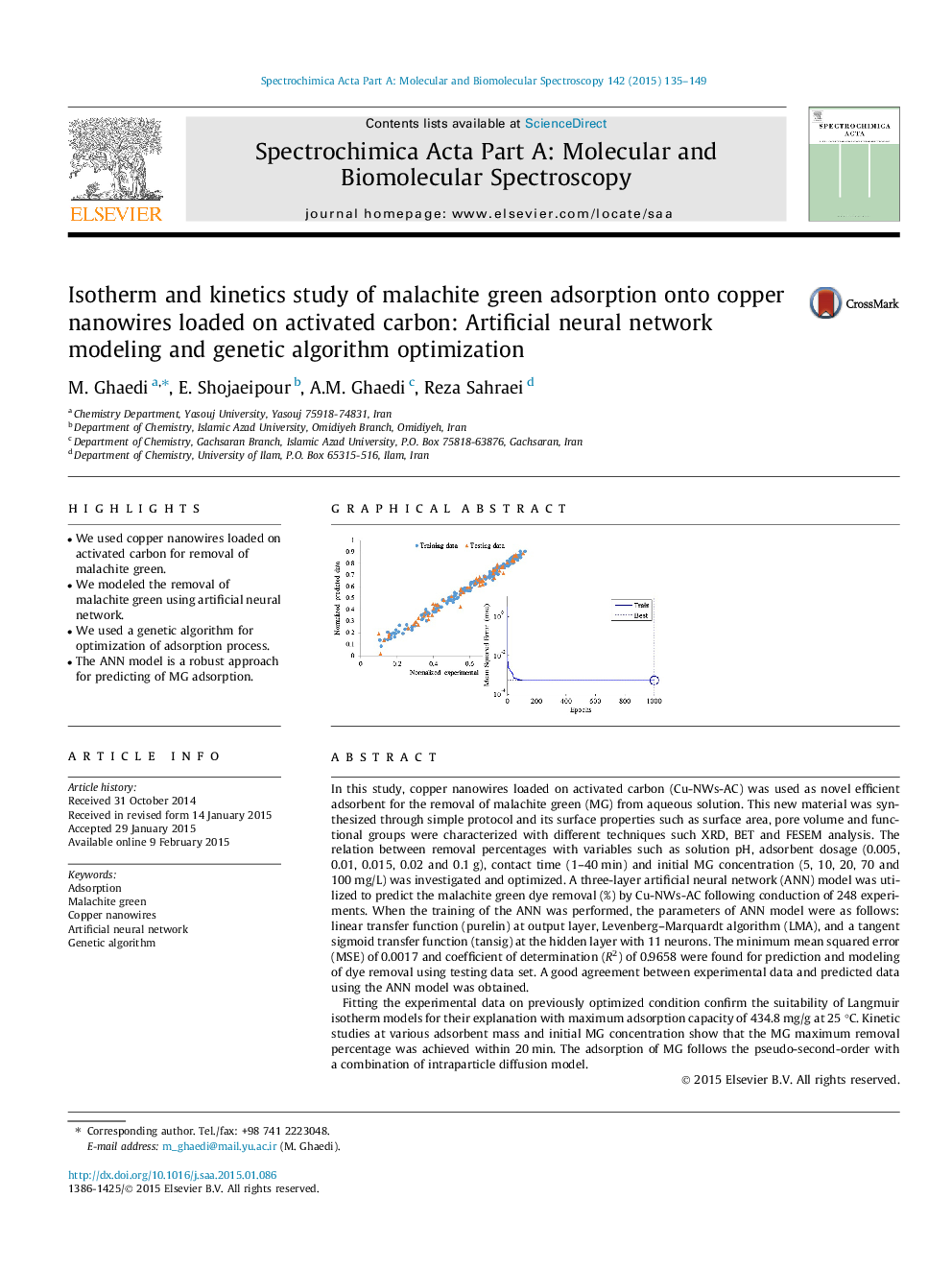| Article ID | Journal | Published Year | Pages | File Type |
|---|---|---|---|---|
| 1229166 | Spectrochimica Acta Part A: Molecular and Biomolecular Spectroscopy | 2015 | 15 Pages |
•We used copper nanowires loaded on activated carbon for removal of malachite green.•We modeled the removal of malachite green using artificial neural network.•We used a genetic algorithm for optimization of adsorption process.•The ANN model is a robust approach for predicting of MG adsorption.
In this study, copper nanowires loaded on activated carbon (Cu-NWs-AC) was used as novel efficient adsorbent for the removal of malachite green (MG) from aqueous solution. This new material was synthesized through simple protocol and its surface properties such as surface area, pore volume and functional groups were characterized with different techniques such XRD, BET and FESEM analysis. The relation between removal percentages with variables such as solution pH, adsorbent dosage (0.005, 0.01, 0.015, 0.02 and 0.1 g), contact time (1–40 min) and initial MG concentration (5, 10, 20, 70 and 100 mg/L) was investigated and optimized. A three-layer artificial neural network (ANN) model was utilized to predict the malachite green dye removal (%) by Cu-NWs-AC following conduction of 248 experiments. When the training of the ANN was performed, the parameters of ANN model were as follows: linear transfer function (purelin) at output layer, Levenberg–Marquardt algorithm (LMA), and a tangent sigmoid transfer function (tansig) at the hidden layer with 11 neurons. The minimum mean squared error (MSE) of 0.0017 and coefficient of determination (R2) of 0.9658 were found for prediction and modeling of dye removal using testing data set. A good agreement between experimental data and predicted data using the ANN model was obtained.Fitting the experimental data on previously optimized condition confirm the suitability of Langmuir isotherm models for their explanation with maximum adsorption capacity of 434.8 mg/g at 25 °C. Kinetic studies at various adsorbent mass and initial MG concentration show that the MG maximum removal percentage was achieved within 20 min. The adsorption of MG follows the pseudo-second-order with a combination of intraparticle diffusion model.
Graphical abstractFigure optionsDownload full-size imageDownload as PowerPoint slide
